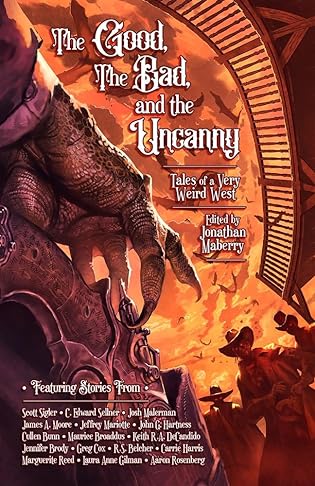 The Good, The Bad, & The Uncanny: Tales of a Very Weird West
The Good, The Bad, & The Uncanny: Tales of a Very Weird West by
Jonathan Maberry,
C. Edward Sellner,
Keith R.A. DeCandido,
James A. Moore,
Greg Cox,
Josh Malerman,
Carrie Harris,
John G. Hartness,
Jennifer Brody,
Scott Sigler,
Laura Anne Gilman,
Aaron Rosenberg,
Jeffrey J. Mariotte,
R. S. Belcher,
Marguerite Reed,
Maurice Broaddus,
Cullen Bunn Format: eARC Source: publisher Formats available: paperback, ebook
Genres: fantasy,
horror,
short stories,
steampunk,
Weird West Pages: 350
Published by Outland Entertainment on December 19, 2023
Purchasing Info: Author's Website,
Publisher's Website,
Amazon,
Barnes & Noble,
Kobo,
Bookshop.org,
Better World Books Goodreads Gunslingers. Lawmen. Snake-oil Salesmen. Cowboys. Mad Scientists. And a few monsters. The Old West has never been wilder! THE GOOD, THE BAD, AND THE UNCANNY presents sixteen original and never-before-published adventures by some of today’ s most visionary writers who have spun wildly offbeat tales of gunmen, lawmen, magic, and weird science. Saddle up with Josh Malerman, Scott Sigler, Keith DeCandido, Cullen Bunn, R.S. Belcher, Greg Cox, Jeffrey Mariotte, Laura Anne Gilman, Aaron Rosenberg, Maurice Broaddus, John G. Hartness, Carrie Harris, James A. Moore, Marguerite Reed, C. Edward Sellner, Carrie Harris, and Jennifer Brody! These tales twist the American West into a place of darkness, shadows, sudden death, terror in the night, bold heroism, devious magic, and shocking violence. Each story blazes a new trail through very strange territory – discovering weird science, ancient evil, mythic creatures, and lightning-fast action. Edited by Jonathan Maberry, NY Times bestselling author of A DEADLANDS NOVEL, the Joe Ledger Thrillers, V-WARS, and KAGEN THE DAMNED.
My Review:
I don’t normally start reviews by talking about the author’s – or in this case the editor’s – Foreword. In fact, I very seldom read the Foreword because I’m too interested in getting to the actual story – or in this case stories – to take the time. And they’re generally not all that fascinating. But I read this one and got hit with a sense of nostalgia so strong that I can’t resist mentioning it here. Because the editor and I grew up with those same Westerns on TV pretty much all the time in our childhood, and because we both emerged with the same favorite, The Wild, Wild West.
Not that awful 1999 movie. I mean – and the author meant – the one, the only, the original TV series with Robert Conrad and Ross Martin. I still remember, and can hear Ross Martin’s voice in my head, talking mostly to himself, as he often did, as he was whipping up “the spécialité de la maison of the Hotel Desperation!” to get them out of whatever fix they’d gotten themselves into in that act of the four acts that made up each weekly episode. It’s a VERY fond memory.
 So, if you have that same fondness for Westerns – especially those that touched on, or were touched by, or dipped their whole entire six-shooters into the very, very weird, or if you’re a fan of more recently published ‘Weird West’ inspired stories such as Charlaine Harris’ Gunnie Rose series and Laura Anne Gilman’s Huntsmen, or if you just plain love it when the things that go bump in the night are armed with fangs, claws AND six-shooters, this collection might just be your jam.
So, if you have that same fondness for Westerns – especially those that touched on, or were touched by, or dipped their whole entire six-shooters into the very, very weird, or if you’re a fan of more recently published ‘Weird West’ inspired stories such as Charlaine Harris’ Gunnie Rose series and Laura Anne Gilman’s Huntsmen, or if you just plain love it when the things that go bump in the night are armed with fangs, claws AND six-shooters, this collection might just be your jam.
It certainly was mine. It was mine so much, in fact, that this is one of the rare occasions when I’ve rated each story in the collection individually, so that you can get the full-bodied flavor – complete with actual bodies, for each and every one.
“The Disobedient Devil Dust-up at Copper Junction” by Cullen Bunn
Mad scientist meets even madder gremlins as Professor Dimitri Daedalus and his Navajo partner Yiske arrive in remote Copper Junction Utah, summoned by the Professor’s old mentor to be his next sacrifices to the gremlins tearing up every single human tool in town with applied chaos and malice, only to end in fiery glory sailing off a cliff. Good fun. B
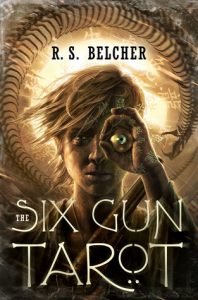 “Devil’s Snare” (Golgotha #1.5) by R.S. Belcher
“Devil’s Snare” (Golgotha #1.5) by R.S. Belcher
In spite of being part of a series, this story stands quite well alone. Love-lorn scientist/engineer Clay Turlough, who combines bits of both Dr. Frankenstein AND his monster, gets dragged out of his latest attempt to ‘save’ his ladylove by a more strictly medical case of a poisoned boy, his widowed mother, and the man who is a bit too invested in both. A-
“Bad” by Josh Malerman
Borderline horror about two idiots who think they can rob the most secure bank on ‘The Trail’ by pretending to be one of the bank’s regular depositors. A pretense they intend to enact by literally stealing the man’s face. A hard read because the murdering bank robber wannabes are really, really TSTL to the point where the story is just blood, guts and idiocy. D
“Bigfoot George” by Greg Cox
Gold fever grips a gang of humans claiming a strike in Bigfoot country. The ringleaders think they can treat sasquatch the way they treat their fellow humans – only one of those fellow humans isn’t to both the humans and the sasquatch’ detriment. The humans are nasty in ways that are all too familiar, but the heel-turn of their not-so-human companion is epic enough to nearly redeem their mess – if not them. C+
“Story of the Century” by C. Edward Sellner
A tale of angels and demons, vampires and newspaper reporters. A reporter with a nose for news follows a bounty hunter on the trail of a demon who can wipe out whole towns in a single breath, only to find herself the last witness to an epic confrontation between celestial and demonic forces that wakes a legacy she had no idea she possessed. B
“The Stacked Deck” by Aaron Rosenberg
A card sharp with a magic touch wins his way onto a gambler’s paradise of a riverboat cruise only to learn that the stake he’s playing for is his soul and the deck has been stacked by a demon who believes he holds all the cards. The weird side of the weird West with a fascinating magical system of drawing cards from the ether. Maverick would have fit right in. And won. B+
 “Desert Justice” by Maurice Broaddus
“Desert Justice” by Maurice Broaddus
A black man with a righteous cause, the will to back it up and the grief not to care if he goes down in the fight takes up a magical badge to battle the evil spirit of the dead Confederacy that white men are using to vilify, subjugate and lynch blacks who stand up for themselves in the west after they fled the ‘legal slavery’ of the sharecropping system. If you enjoyed the author’s novella Buffalo Soldier you’ll love this one too. I certainly did. A
“In the End, the Beginning” by Laura Anne Gilman
A still heartbreaking but slightly more hopeful alternate magical version of the white man’s invasion of the west. It can’t be stopped, but powerful spirits CAN, if they are willing to sacrifice themselves and their magic in the cause, alter the means by which it happens, in the hopes that the ones who can’t be stopped are the best of their kind and not the worst. A
“Nightfall on the Iron Dragon Line” by James A. Moore
The inevitable train story because no western or weird version thereof would be complete without one train story. The concept is interesting, and a story about a lawman bringing in a dangerous criminal always works in westerns but this one needed to be longer for all the disparate elements – especially the worm and the Chinese engineers – to come together. C
“Simple Silas” by Scott Sigler
This is straight up horror and the story relies on the protagonist having an undefined intellectual disability (because they were back then) in a way that just makes the whole thing more uncomfortable than compelling. D
“Hell and Destruction are Never Full” by Marguerite Reed
A bounty hunter captures a man for more money than she’s ever seen in her life and doesn’t want to hear about the real reason the bounty was set – until she comes face to face with a vampire and his renfield who plan to shut up a witness and get a meal out of it at the same time. That this has a happy ending is a big surprise. It’s not the standout in the collection but it was pretty good all the same. B
“The Legend of Long-Ears” by Keith R.A. DeCandido
A meeting that never happened between two legends, Calamity Jane and Deputy U.S. Marshal Bass Reeves. Calamity is a seer who drinks to keep her visions of the future at bay, while she does her best to keep the chaos agent known as Long-Ears from taking more lives than he’s due. She saves Reeves but can’t save them all. However, she saves so many that Long-Ears himself travels the west telling any who will listen the tale of his greatest and most respected enemy. This one seems like the quintessential weird west story, or at least one branch of it, with legends meeting, native spirits interfering, respect between enemies and tragedies all around. A+
“The Night Caravan” by Jennifer Brody
A post-apocalyptic tale where the desert has returned, while technology and fallout have bred monsters and settlements are far apart while travel puts you in danger of being ridden by one of the monsters. The mix of high tech and low villainy with a mythical utopia that is probably a boondoggle makes the story interesting. B
“Dreadful” by John Hartness
A middle-aged widow and a tired vampire-hunting cowboy team up to wipe out a nest of vampires that is eating their way across the west like locusts. Separately, they’re victims, together they might just be enough to get the job done. And if there’s an after, they might have a chance at being happy in it, together. B+
“Thicker Than Water” by Carrie Harris
Families are terrible. His brothers are human monsters. Her sisters are sea monsters. But family is family and blood is thicker than water, even when the deck of the ship is awash in it. This one just wasn’t my cuppa, and I’m trying really hard not to think about what the tea in that cuppa would be made of. C
“Barnfeather’s Magical Medicine Show and Tent Extravaganza” by Jeffrey J. Mariotte
Another one a bit too high on the creep-o-meter for me, about a magical circus tent that steals children and eats them to keep itself and its avatar powered – or perhaps the other way around, pursued by a lawman hoping to rescue children who are already gone. C
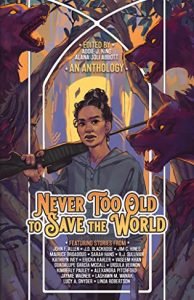 Escape Rating B: I had to do math to get to an overall rating, just as I did for the review of a previous collection by this publisher, Never Too Old to Save the World, which is going to end up on my Best Books list for this year because I’ve referred to it so often.
Escape Rating B: I had to do math to get to an overall rating, just as I did for the review of a previous collection by this publisher, Never Too Old to Save the World, which is going to end up on my Best Books list for this year because I’ve referred to it so often.
I enjoyed this collection, well, not quite as much as Never Too Old, but still quite a bit. Even the stories that went too far into horror for my personal tastes, or the couple that just didn’t work for me, still added to the overall feeling of ‘those thrilling days of yesteryear’ even if it was a weirder and more uncanny yesteryear than The Lone Ranger ever imagined.
Or perhaps especially because it was a whole lot weirder and considerably more uncanny. Just as marvelously as The Wild, Wild West so often was.
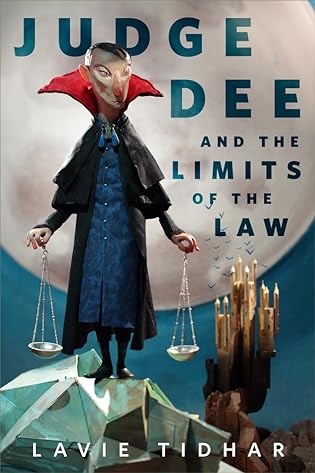 Judge Dee and the Limits of the Law (Judge Dee, #1) by Lavie Tidhar
Judge Dee and the Limits of the Law (Judge Dee, #1) by Lavie Tidhar 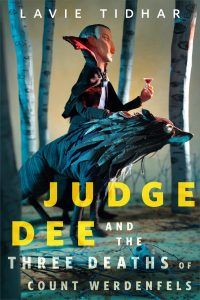 What makes the story fun – more than fun enough that I’ll be picking up the next story the next time I need something short to tide me over an overcommitted calendar – is the first person perspective of poor, put upon, Jonathan. He’s snarky, he’s both world-weary and vampire-weary, but he’s always aware of the side on which his bread is buttered – when he can get any, that is. So his commentary covers the Judge, the law he administers, his opinions and predilections, but also the companionship they provide each other.
What makes the story fun – more than fun enough that I’ll be picking up the next story the next time I need something short to tide me over an overcommitted calendar – is the first person perspective of poor, put upon, Jonathan. He’s snarky, he’s both world-weary and vampire-weary, but he’s always aware of the side on which his bread is buttered – when he can get any, that is. So his commentary covers the Judge, the law he administers, his opinions and predilections, but also the companionship they provide each other.
 Court of Wanderers (Silver Under Nightfall, #2) by
Court of Wanderers (Silver Under Nightfall, #2) by 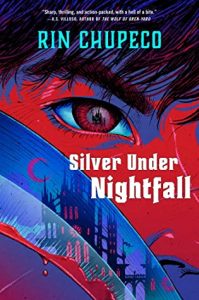 Escape Rating A++: The SQUEE is strong with this review. Let’s get into at least a bit of the why of that fact.
Escape Rating A++: The SQUEE is strong with this review. Let’s get into at least a bit of the why of that fact. No One Goes Alone by
No One Goes Alone by 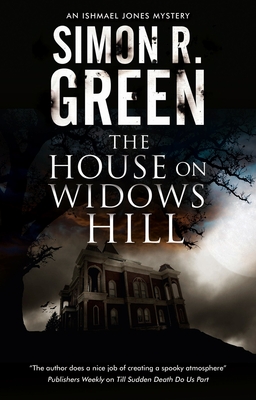 The House on Widows Hill (Ishmael Jones #9) by
The House on Widows Hill (Ishmael Jones #9) by 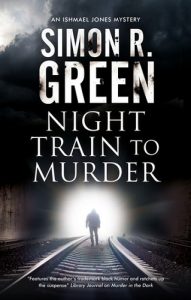 The House on Widows Hill is more of a twist on the typical English country house mystery than even Ishmael Jones and his partner Penny Belcourt usually have to contend with.
The House on Widows Hill is more of a twist on the typical English country house mystery than even Ishmael Jones and his partner Penny Belcourt usually have to contend with.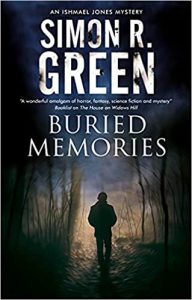 Someone in the ‘Organization’ is considering buying the place – or that’s what Ishmael and Penny are told, anyway. That night is a ‘one-night-only’ invitation to not just Ishmael and Penny as representatives of the potential buyer, but also to a whole team of “ghost botherers” (as Ishmael calls them) who have been begging – for years it seems – to get inside the old haunt. Along with one intrepid reporter who represents the family that owns the creepy pile – and really would like to get shed of the place once and for all.
Someone in the ‘Organization’ is considering buying the place – or that’s what Ishmael and Penny are told, anyway. That night is a ‘one-night-only’ invitation to not just Ishmael and Penny as representatives of the potential buyer, but also to a whole team of “ghost botherers” (as Ishmael calls them) who have been begging – for years it seems – to get inside the old haunt. Along with one intrepid reporter who represents the family that owns the creepy pile – and really would like to get shed of the place once and for all. Escape Rating A-: I normally save this series for around Halloween, but I’m in the midst of a reading quandary that I hoped this book would solve – or at least beat back for a couple of days. I’m in the middle of listening to Erik Larson’s
Escape Rating A-: I normally save this series for around Halloween, but I’m in the midst of a reading quandary that I hoped this book would solve – or at least beat back for a couple of days. I’m in the middle of listening to Erik Larson’s 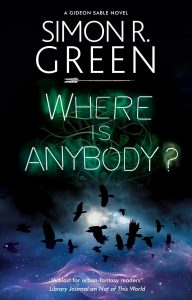 The House on Widows Hill very much has the classic haunted house vibe going on – even though with Ishmael and Penny involved the reader begins the story aware that it just isn’t going to go to any of the places that haunted houses normally go. That Ishmael gets shaken out of some of his internal certainties and securities added a bit to the ongoing arc of the series while at the same time ramping up the tension of both this book and the books in the series yet to come.
The House on Widows Hill very much has the classic haunted house vibe going on – even though with Ishmael and Penny involved the reader begins the story aware that it just isn’t going to go to any of the places that haunted houses normally go. That Ishmael gets shaken out of some of his internal certainties and securities added a bit to the ongoing arc of the series while at the same time ramping up the tension of both this book and the books in the series yet to come.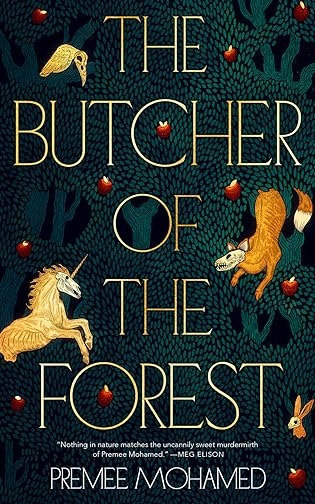 The Butcher of the Forest by
The Butcher of the Forest by 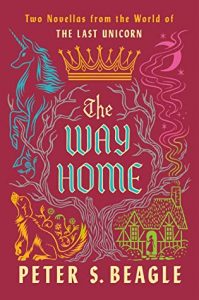 What kept niggling at me through my read of The Butcher of the Forest was that it reminded me, strongly and often, of something else that was not Middle Earth. And that, as it turns out, is the Sooz duology in Peter S. Beagle’s
What kept niggling at me through my read of The Butcher of the Forest was that it reminded me, strongly and often, of something else that was not Middle Earth. And that, as it turns out, is the Sooz duology in Peter S. Beagle’s 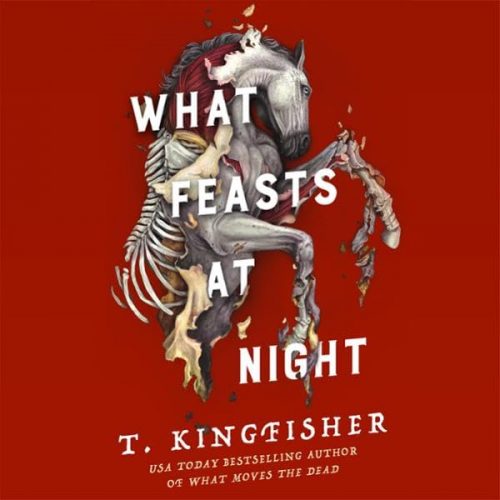 What Feasts at Night (Sworn Soldier, #2) by
What Feasts at Night (Sworn Soldier, #2) by 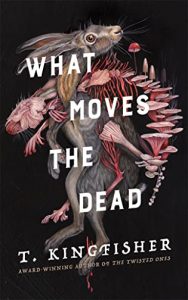 Escape Rating A-: I’m not sure whether to say that What Feasts at Night isn’t quite as creepy as
Escape Rating A-: I’m not sure whether to say that What Feasts at Night isn’t quite as creepy as 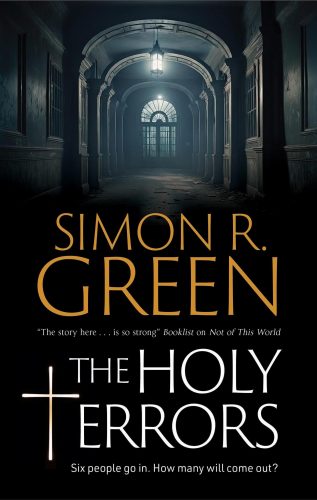 The Holy Terrors (A Holy Terrors mystery) by
The Holy Terrors (A Holy Terrors mystery) by 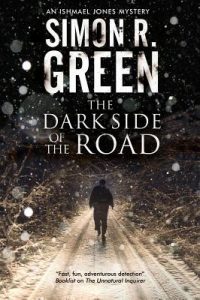 Escape Rating B-: I ended up with a LOT of mixed feelings about this one, some of which may have to do with having no love or even liking for so-called reality TV. (Although, honestly, if the author has any love for that genre it’s a particularly twisted version of it.)
Escape Rating B-: I ended up with a LOT of mixed feelings about this one, some of which may have to do with having no love or even liking for so-called reality TV. (Although, honestly, if the author has any love for that genre it’s a particularly twisted version of it.)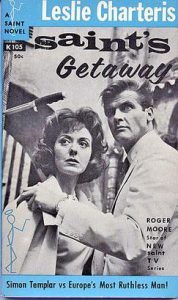 It niggled at me through the whole book as something familiar, but I was caught up just enough in the mystery at hand and the bell didn’t ring until AFTER I finished the book. Because that phrase, in popular parlance in British in the 1930s,
It niggled at me through the whole book as something familiar, but I was caught up just enough in the mystery at hand and the bell didn’t ring until AFTER I finished the book. Because that phrase, in popular parlance in British in the 1930s,  The Good, The Bad, & The Uncanny: Tales of a Very Weird West by
The Good, The Bad, & The Uncanny: Tales of a Very Weird West by  So, if you have that same fondness for Westerns – especially those that touched on, or were touched by, or dipped their whole entire six-shooters into the very, very weird, or if you’re a fan of more recently published ‘Weird West’ inspired stories such as Charlaine Harris’
So, if you have that same fondness for Westerns – especially those that touched on, or were touched by, or dipped their whole entire six-shooters into the very, very weird, or if you’re a fan of more recently published ‘Weird West’ inspired stories such as Charlaine Harris’  “Devil’s Snare” (Golgotha #1.5) by R.S. Belcher
“Devil’s Snare” (Golgotha #1.5) by R.S. Belcher “Desert Justice” by Maurice Broaddus
“Desert Justice” by Maurice Broaddus Escape Rating B: I had to do math to get to an overall rating, just as I did for the review of a previous collection by this publisher,
Escape Rating B: I had to do math to get to an overall rating, just as I did for the review of a previous collection by this publisher,  We Are the Crisis (Convergence Saga #2) by
We Are the Crisis (Convergence Saga #2) by 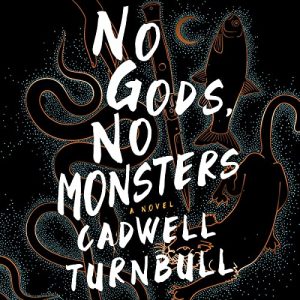 Escape Rating B+: The story so far, with the separation of its many and various threads and its detachment from its characters, reads like a kind of fever dream. Or at least it feels that way when read by its marvelous narrator Dion Graham.
Escape Rating B+: The story so far, with the separation of its many and various threads and its detachment from its characters, reads like a kind of fever dream. Or at least it feels that way when read by its marvelous narrator Dion Graham.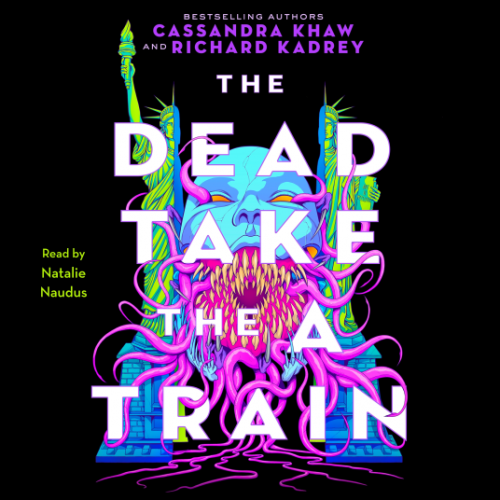 The Dead Take the A Train (Carrion City, #1) by
The Dead Take the A Train (Carrion City, #1) by 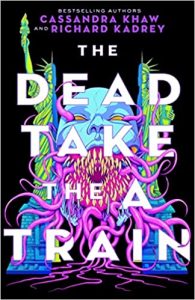 Escape Rating B+: First and most importantly, this is your trigger warning that The Dead Take the A Train is a bloody, gory, gruesome reminder that urban fantasy as a genre is the uncanny child of mystery and horror, much like the uncanny babies being born in yesterday’s book,
Escape Rating B+: First and most importantly, this is your trigger warning that The Dead Take the A Train is a bloody, gory, gruesome reminder that urban fantasy as a genre is the uncanny child of mystery and horror, much like the uncanny babies being born in yesterday’s book,